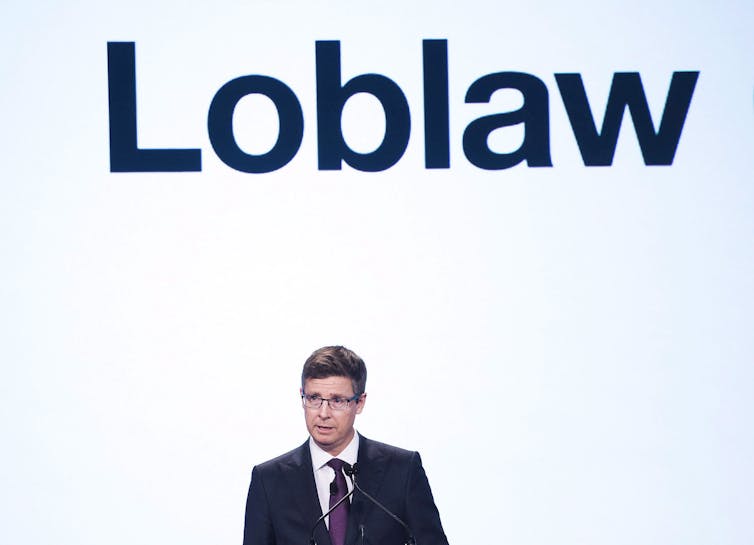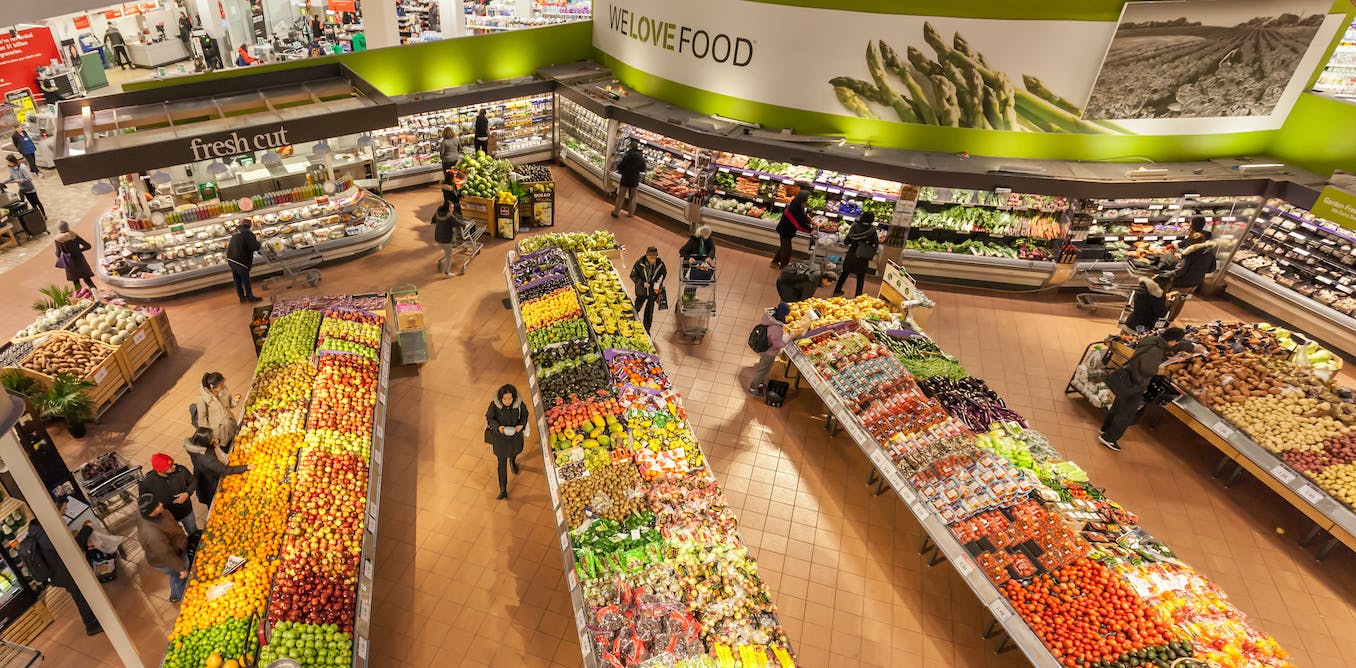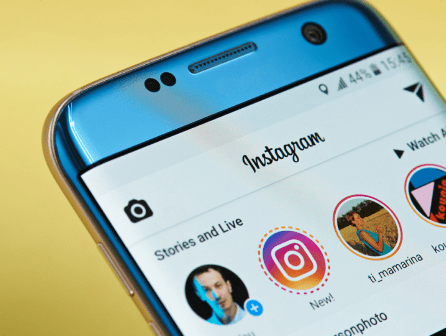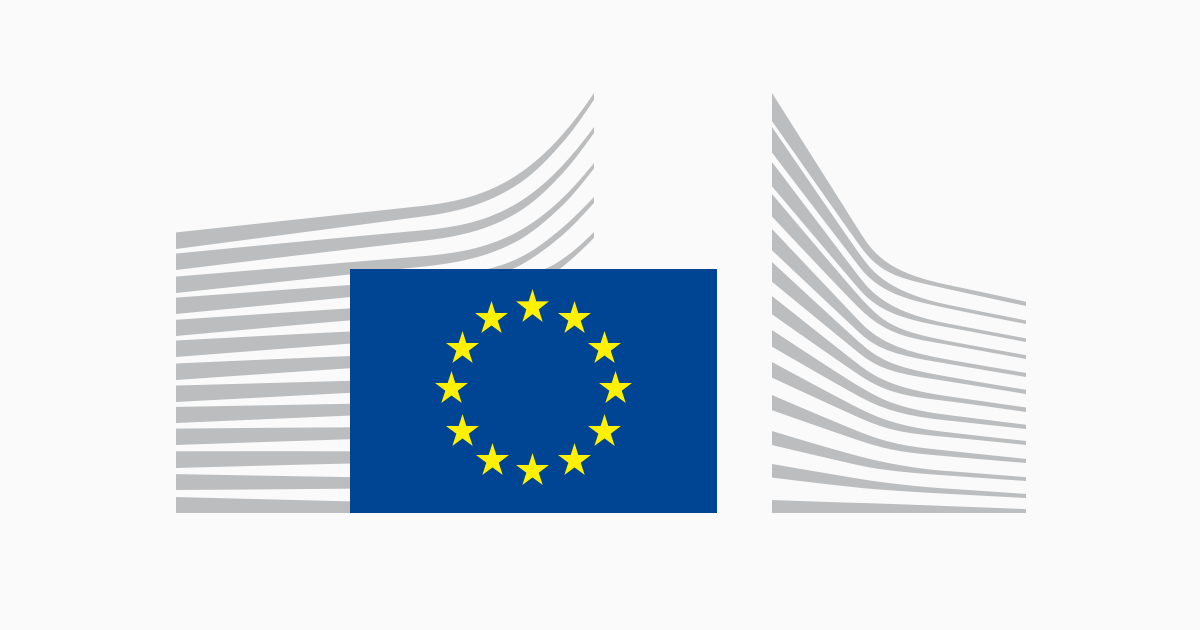Loblaw Companies made headlines in October 2022 for freezing the prices on one of its in-store brands in the face of record food inflation. When the promotion finally ended on Jan. 31, consumers responded negatively to the announcement.
In response to consumer criticism, Loblaw took to social media to defend itself. The result was an embarrassing communications display from one of Canada’s biggest companies.
The disastrous end presents a useful opportunity for Canadians to recognize how companies attempt to manage public perception of a brand through times of crisis and instability.
The communications failure should spur Canadians to pressure Loblaw — a company that controls our access to food and, increasingly, health care — to worry about the material effects of its actions, not just its words.
A successful campaign launch
The rollout of a marketing campaign like Loblaw’s involves anticipating how the competition, press and public will react. Public letters, Twitter threads, ads and in-store promotional materials are all strategic tools an organization uses to land the most advantageous media coverage possible. Plans are made for both launching and wrapping up the campaign.
In October, Loblaw announced its price freeze through a letter sent to its rewards program members from chair and president Galen Weston. The letter argued that food price increases were out of control and Loblaw would freeze the price of its No Name brand items to help Canadians.
The Canadian media ran several stories that echoed the letter almost beat-for-beat. This was a messaging success. News coverage stayed on Loblaw’s message, even as competitors pointed out that seasonal price freezes were routine in the grocery industry.

THE CANADIAN PRESS/Nathan Denette
Nonetheless, thanks to a savvy management campaign — including in-store ads — Loblaw managed to capture good press by advertising a common industry practice as a form of charity.
On Twitter, some contested Loblaw’s claim that rising prices were out of its control by pointing to the shockingly high quarterly earnings the company had announced to its shareholders. This narrative echoes the public response to the company ending its Hero Pay benefits in 2020 despite record profits during quarantine.
Playing the social media game
The ending of such a marketing campaign is just as important as the launch. Loblaw’s three-month-long prize freeze ended on the last day of January, prompting backlash online from consumers.
Loblaw’s social media team took an unusual approach to handling this criticism: responding directly.
Communications strategies succeed when they are well-messaged and highly controlled. Tweets are not an inherently bad choice when it comes to handling criticism on social media; if a company’s responses are factual and well-crafted, interactions will likely stay confined to online platforms. But if responses contain outlandish claims, tweets can blow up and escape into broader public discourse.
Loblaw’s recent Twitter responses fall into this second category. In a particularly cringe-worthy series of replies, the company claimed it had become “the face of food inflation” through no fault of its own. Echoing the October 2022 letter, Loblaw argued that the real culprit was cost increases along its supply chain.
In another tweet, the company suggested that it was too easy to blame grocers for high prices. It suggested that Loblaw’s grocery stores earned just a $4 profit on every $100 of groceries sold.
Bad communications strategy assumes the reader is stupid. The tweet was particularly painful because it was easy to see through the argument: Loblaw owns much of its own supply chain.
The grocery store stocks its shelves with private label brands — Blue Menu, President’s Choice and of course No Name brand — that it owns and prioritizes in its marketing, merchandising and retailing placement. This is public knowledge among Canadians because Loblaw’s, No Name and the President’s Choice brands all share the same spokesperson: Galen Weston.
As food marketing analyst Richard Baker recently pointed out, 44 per cent of all branded goods sales at Loblaw’s come from its own brands. This allows the company to cut a profit long before its products ever land in the aisles of its own retail stores. The $4 profit generated at the checkout counter represents only a fraction of the money such a large corporation makes.
Laying the blame elsewhere
The tweets were criticized by social media users, politicians and the press alike. They tell us much about how an organization like Loblaw weighs its actions against its public perception.
An image-first approach to communications runs the risk of producing a kind of myopia where a company’s leadership begins to assume that every problem it faces is the result of external perception, rather than its own actions.
In the long term, this kind of thinking clouds good judgement. It convinces leadership they can do no wrong, that every problem has a communications solution, and that it is Canadians themselves who do not understand. This becomes especially dangerous when the company’s own executive is also their spokesperson.
Nowhere is this myopia more on display than Weston’s recent refusal to appear before parliament to discuss food inflation. Sending a chief financial officer to speak before the House of Commons suggests the brand’s spokesperson is above the very people they claim to serve.
Brands don’t exist in a vacuum
In 1955, market researchers Burleigh Gardner and Sidney Levy argued that brands “do not grow in a vacuum.” Rather, they are continually shaped by the actions of organizations and ordinary people’s perceptions, for better or for worse.
In the modern digital media landscape, brands have become more easily scrutinized; their meanings are harder to manage and contain.
Today, brands like Loblaw require constant surveillance and maintenance to ensure the right feelings and narratives stick. Individual slip-ups might happen, but as Gardner and Levy argued nearly 70 years ago, “they all make their contributions, for good or for bad.”
Dissonance emerges when a company’s actions can’t be squared away against its words. Weston’s brand as a spokesperson might be friendly and affable, but his organization’s pricing strategies are anything but.
Canadians should be especially concerned about the lack of accountability and honest communications at Loblaw. The company acquired Shoppers Drug Mart in 2013, heavily invested in the virtual care company Maple in 2020 and acquired Lifemark Health Group in 2022. These moves signal to investors that offering medical services will be a key future growth area for the company.
Loblaw’s recent disastrous public communications make it plain that profits will be put ahead of people when it comes to health care as well.




